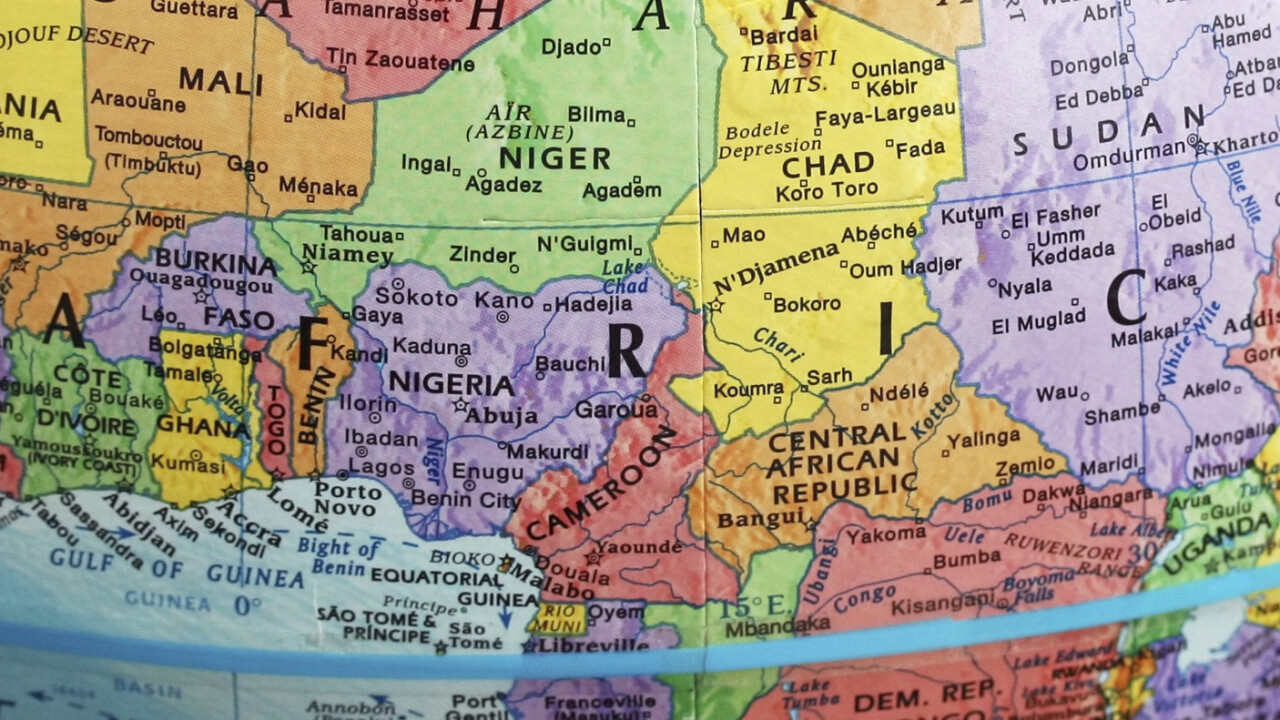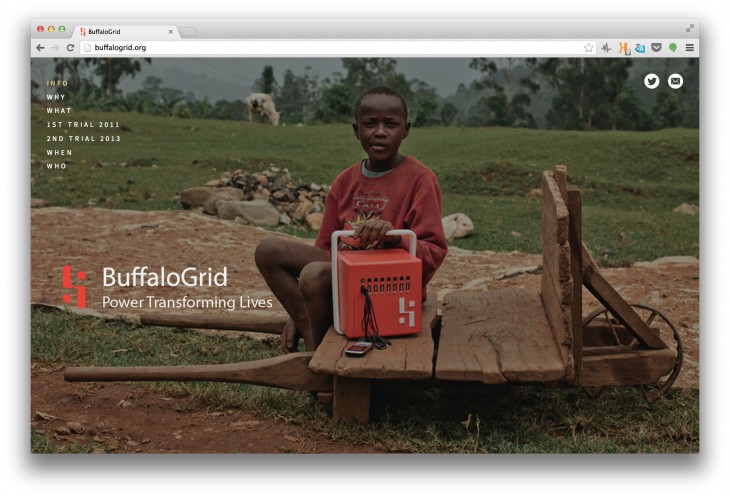
Editor’s note: This is a guest post by Rudy de Waele, CEO of Nyota Media. You can follow him as @mtrends on Twitter.
I started investigating mobile in Africa early 2010, which resulted in the Mobile Trends 2020 Africa document that I curated together with Ken Banks and Erik Hersman, and presented at The Next Web Conference in 2011.
Embedded below is a summary of slides from the “How Mobile Technology is Transforming Africa” presentation I gave at the Mobile Innovations @ OCE Discovery event in Toronto in May 2013.
As a taster, if you want to learn more about the state of the industry on Mobile Technology in Africa, you may wish to check first the Mobile Opportunities in Africa – Engaging with the Next Billion slides I published a couple of months ago.
The presentation examines how mobile is used in combination with sustainable energy solutions to power local rural communities and how young students use 3D Printing technology to design solutions for local health problems. Included are examples of entrepreneurial greenfield opportunities such as: Education, Agriculture, e/m-Commerce, Entertainment and Devices.
The WOW generation
Many of us know that the work of the big NGOs is not always as efficient as it seems, in the sense that it doesn’t help people living in rural Africa with creating a self-sustainable environment and culture for themselves. On the other hand, there’s a new generation of young talented and driven social entrepreneurs who are not only in it for the money but who are taking into account a positive return to society as well. They work together with local entrepreneurs to solve local problems.
By combining creativity and an innovative spirit, they have invented brilliant low-tech solutions which presently help thousands of citizens already, and will help millions more in the near future.
Mobile energy solutions
Reliable electricity in many parts in Sub-Saharan Africa is not a given. In Uganda for example, only 4% of the territory is covered by grid electricity, and even in those places with access to the grid, people have generators, as grid power is very unreliable.
Inventive alternative solutions are sought in order to produce electricity. In many cases, car batteries provide currently additional generated electricity. These batteries are recharged at garages, fuelled by real cars. Not exactly the cheapest solution and for the least a very polluting one.
Luckily entrepreneurs are very creative and so many have come up with cheaper and non-polluting alternative energy solutions for the off-grid world. What started off as a source to provide cheap lighting for the people to study and work after sunset is now used to charge mobile phones.
Here are some examples:
- Local entrepreneurs who use a human-powered power cycle to charge their battery-powered lights charge Nuru lights from village to village in Rwanda, Kenya, Uganda and Cameroon.
- Angaza Design, based in Palo Alto, developed a pay-as-you-go technology platform using solar panels to provide energy to charge mobile phones in rural villages via SMS or local mobile money transfers. They are currently operating in Tanzania, Kenya and Zambia. The company claims that solar lighting and phone charging is now cheaper than buying a liter of kerosene.
- M-KOPA Solar provides affordable solar-powered lighting and mobile charging to rural Kenyans on a pay-as-you-go basis, with payment via M-PESA. The company, established in 2011, is now actively providing affordable solar power to over 15,000 Kenyan households and adding close to 1,000 more every week. The M-KOPA team includes founders and senior management from the Vodafone and Safaricom award winning M-PESA service, and a team of Kenyan and international staff with extensive backgrounds in software development, distribution, finance and customer care.
- BuffaloGrid is a UK-based research project which enables rural villagers to recharge their phones through a network of local agents. These local entrepreneurs drive around on bicycles from village to village while recharging their customer’s phone charger. The project has been tested in Uganda and Ghana.

3D printing
I first learned about 3D printing while attending an executive program at the Singularity University in spring 2011, in a session with Autodesk. Since then we have seen an explosion of 3D printing examples and possibilities from around the globe.
The 3D printing phenomenon has also landed on the African continent with some great examples of how the technology can be used to create prototypes of amazing solutions to be manufactured on a larger scale in the near future.
The Happy Feet project aims to solve the jigger menace in Kenya by using 3D printing to make customised shoes for people suffering from Jigger. The shoes would be manufactured from reused plastic and would also be recyclable once they are worn out. Coming out of the University of Nairobi and The Fablab and developed by Roy Ombatti and Harris Nyali, this project shows the potential 3D printing technologies can have a huge impact on local diseases.
W.Afate
A young Togolese maker at WoeLab – the first hacker space based in Lome, Capital of Togo – wants to create a 3D printer “Made in Africa”. He calls it W.Afate, a composition of “W” WoeLab, and “Afate” the name of the inventor Afate Gnikou.
The suburb of Agbogbloshie in Ghana’s capital, Accra, has in recent years become a dumping ground for computers and electronic waste from Europe and the US. Hundreds of tons of e-waste end up there every month where they are broken apart, mostly by children, to salvage the copper, hard drives and other components that can be sold on.
The project raised money on Ulule, a European crowdfunding site and is now being built using parts from recycled e-waste, like old computers, printers and scanners. Afate hopes his project could be part of action to clean up the computer parts that dumps there in the entire neighbourhoods, and also bring the technology to the area, within the reach of ordinary people.
The team’s ‘W.Afate to Mars’ project, a collaboration between the members of WoeLab-Togo and FacLab-France, won the NASA Space APP Challenge Paris in April this year.
Solar Sinter Project
By using the sun’s rays instead of a laser and sand instead of resins (that are used to produce 3D printed materials), Markus Kayser found the basis of an entirely new solar-powered machine and production process using a 3D printing process combining natural energy for making glass objects that taps into the abundant supplies of sun and sand to be found in the deserts of the world.
Check the must see video below:
Conclusion
These are only a couple of inventive, creative solutions being developed by young entrepreneurs locally and from around the globe. These low-tech types of innovations are improving the lives of millions of people on the continent and on a longer term will provide even better solutions as they will be improved over time and will have better distribution.
Mobile technology is a key driver for future economic growth on the continent, and Africa may well be on its way to becoming a hub of technology innovation for the whole planet, despite its many infrastructural challenges.
Whatever is said about Africa, and for sure, there’s a lot of hype created every day, there’s a new generation of young entrepreneurs that are working together to solve local problems day-by-day and step-by-step, it’s a growing movement every day.
If you have a story you’d like me to cover or if you’re looking for setting up your business in Africa using mobile technology, please get in touch.
This coming decade is the decade of Africa. Africa is not the future, Africa is NOW!
Image credit: Thinkstock
Get the TNW newsletter
Get the most important tech news in your inbox each week.





